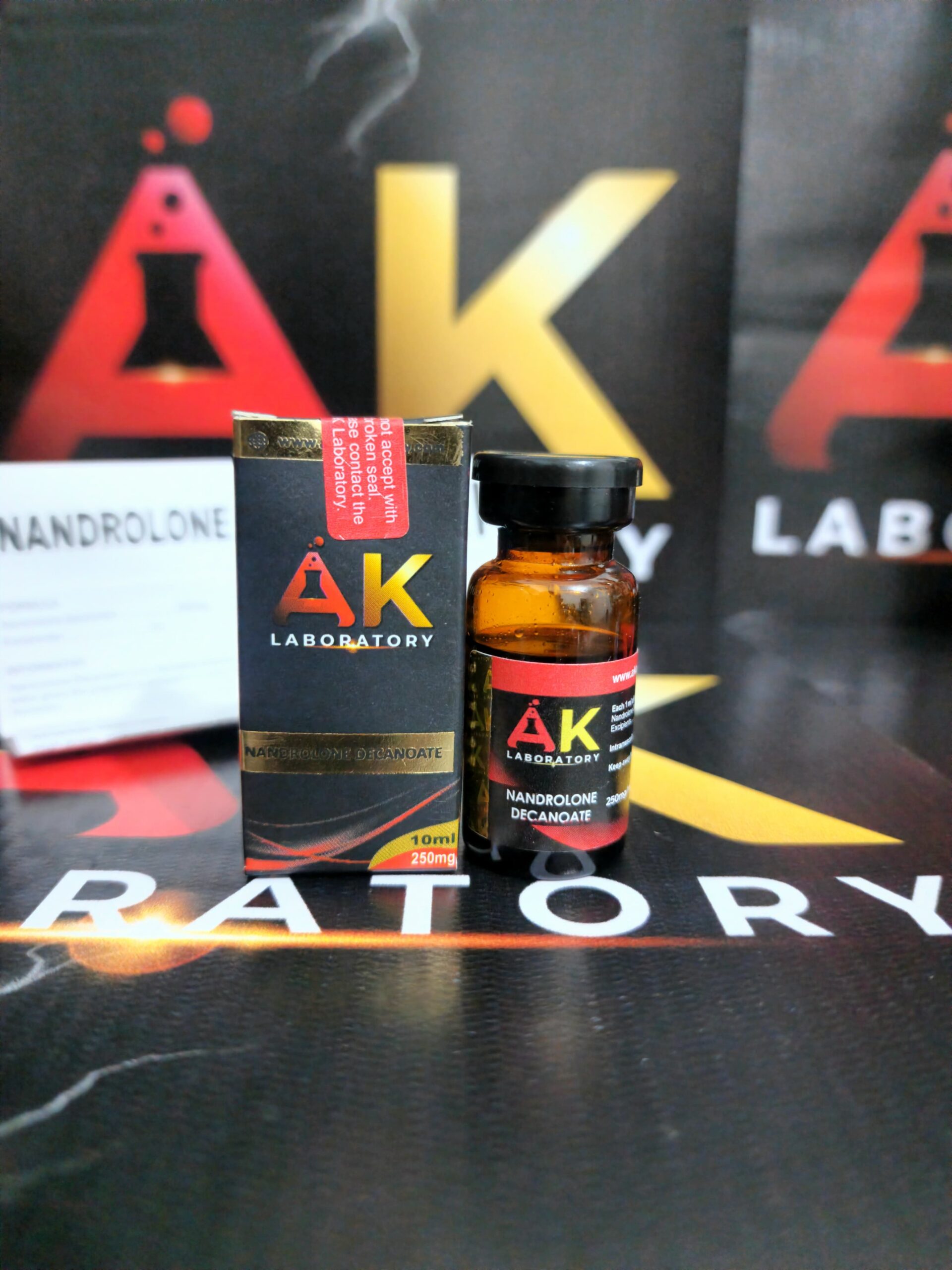Nandrolone Decanoate 250mg/ml
- Home
- Nandrolone Decanoate 250mg/ml
Description
Adult use
Formula:
Every 1 ml. Contains:
Nandrolone Decanoate………………………… 250mg.
Excipients……………………………………………………cs
Properties:
Nandrolone Decanoate is an injectable anabolic preparation. The pharmacologically active substance is nandrolone. The decanoate ester gives the preparation a duration of action of approximately 3 weeks after injection. Nandrolone is chemically related to the male hormone.

Informative
We emphasize that no one should consume without prior medical authorization.
Attention the therapeutic information of this product (treatment, prevention or indications for use) are not allowed in Brazil The therapeutic information present in the article is only valid in its country of origin USA.
Compared to testosterone, it increased anabolic activity and reduced androgenic activity. This has been demonstrated in animal bioassays and elucidated by receptor binding studies. The low androgenicity of nandrolone is confirmed by clinical use.
Nandrolone decanoate has been shown to positively influence calcium metabolism and increase bone mass in osteoporosis. In women with disseminated breast carcinoma, it has been reported to produce objective regressions for many months. In addition, nandrolone has a nitrogen-sparing action.
This effect on protein metabolism has been verified in metabolic studies and is used therapeutically in conditions where there is a protein deficit, such as in debilitating chronic diseases and after major surgery and severe trauma.
In these states, nandrolone serves as a supportive adjunct in specific treatments and dietary measures, as well as parenteral nutrition.
At recommended doses, androgenic effects (eg, virilization) are relatively rare. Nandrolone lacks the C 17 alpha-alkylated group that is associated with the development of liver dysfunction and cholestasis.
Nandrolone Decanoate is slowly released from the injection site into the blood with a half-life of 6 days. In the blood, the ester is rapidly hydrolyzed to nandrolone with a half-life of one or less.
The half-life for the combined process of nandrolone decanoate hydrolysis and nandrolone distribution and elimination is 4.3 hours.
Nandrolone is metabolized by the liver.
The substances 19-norandrosterone, 19-norethocholanolone and 19-norepiandrosterone have been identified as metabolites in urine. It is not known whether these metabolites have any pharmacological action.
Therapeutic indications:
Protein anabolism stimulant.
Osteoporosis.
For the palliative treatment of selected cases of disseminated breast cancer in women.
As an adjunct to specific therapies and dietary measures in pathological states characterized by a negative nitrogen balance.
Note: For an optimal therapeutic effect it is necessary to administer adequate amounts of vitamins, minerals and proteins in a hypercaloric diet.
Side and adverse reactions:
High doses, prolonged treatment and/or too frequent administration may cause:
Virilization that manifests itself in sensitive women in the form of hoarseness, acne, hirsutism and increased libido; in boys before puberty, as increased frequency of erections and phallic thickening, and in girls as increased pubic hair and clitoral hypertrophy. Hoarseness can be the first symptom of a vocal disorder that can lead to a sometimes irreversible deepening of the voice.
Amenorrhea.
Inhibition of spermatogenesis.
Premature epiphyseal closure.
Liquid retention.
Contraindications:
Pregnancy. Known or suspected prostate cancer or breast cancer in men. This medication is contraindicated during pregnancy due to the possibility of masculinization of the fetus. There are not enough data on the use of this drug during lactation to establish potential harm to the nursing infant or a possible influence on milk production.
Precautions and Warnings (in relation to carcinogenesis, mutagenesis, teratrogenesis and fertility effects).
If signs of virilization appear, discontinuation of treatment should be considered, preferably after consultation with the patient.
It is recommended to monitor patients with any of the following conditions.
Latent or overt heart failure, renal dysfunction, hypertension or migraine (or history of these conditions) as anabolic steroids may include fluid retention.
Incomplete natural growth as anabolic steroids in high doses can accelerate epiphyseal closure.
Skeletal metastasis or mammary carcinoma. In these patients, hypercalcemia can develop both spontaneously in both cases and as a result of anabolic steroid therapy. The latter may be indicative of a positive tumor response to hormone treatment.
However, hypercalcemia must first be treated properly and then resume hormone therapy once normal calcium levels are restored.
Liver failure.
The misuse of anabolic steroids to increase athletic ability carries serious health risks and should be discouraged.
Medications and other interactions:
Anabolic steroids can improve glucose tolerance and reduce the need for insulin or other antidiabetic medications in diabetic patients.
Posology:
It must be administered by deep intramuscular injection.
Osteoporosis: 50 mg. Every 3 weeks.
Palliative treatment in selected cases with disseminated breast cancer in women: 50 mg. Every 2-3 weeks.
As an adjunct to specific therapies and dietary measures in pathological states characterized by a negative nitrogen balance:
20-50mg. Every 3 weeks.
Overdose or accidental ingestion:
The toxicity of nandrolone decanoate in animals is very low.
There are no reports of acute overdose with nandrolone in humans.
Presentation:
Box containing 1 vial of 10 mL
Store at a temperature below 25°C in a dry place and out of reach of children.



